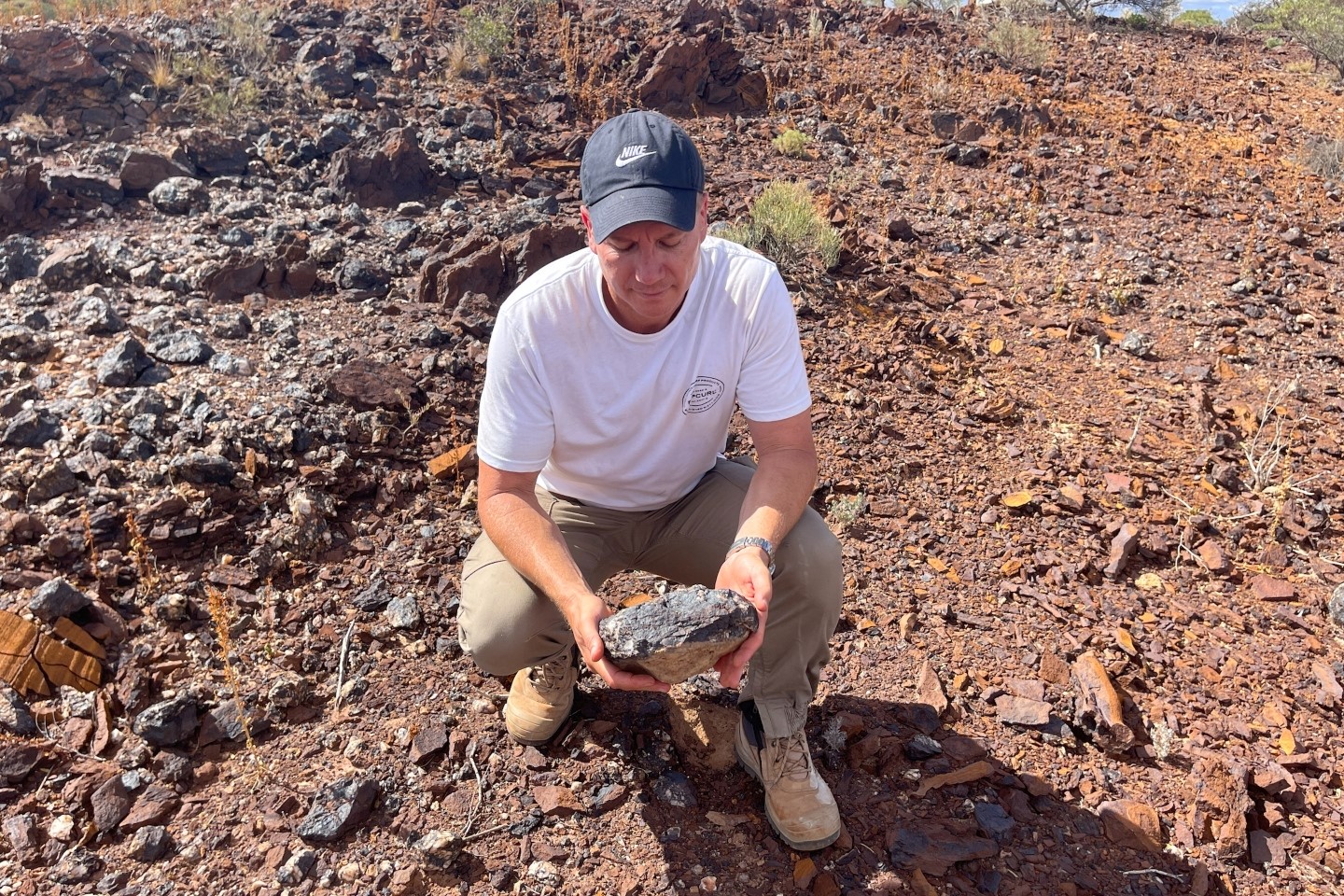Aruma Resources has kicked a goal at the start of its hunt for rare earths at its Saltwater project in Western Australia, with the discovery of significant rare earths mineralisation and cobalt-copper-enriched rocks. Results have reaffirmed the potential for the area to host unconformity heavy rare earths and highlighted the prospectivity for base metals deposits along an interpreted 80km strike length of prospective host rocks.

Aruma Resources has kicked a goal at the start of its hunt for rare earths at its Saltwater project in Western Australia’s Pilbara region, with the discovery of significant rare earths mineralisation and cobalt-copper-enriched rocks.
Results from initial reconnaissance fieldwork have reaffirmed the potential for the area to host unconformity heavy rare earths and also highlighted the prospectivity for base metals deposits along an interpreted 80km strike length of prospective host rocks.
Rock-chip assay results include a stellar 1158 parts per million total rare earths oxide (TREO), including 25 per cent neodymium and praseodymium (NdPr) and 21 per cent heavy rare earths, and 1022ppm TREO, including 25 per cent NdPr and 27 per cent heavy rare earths. There were also several rock chips with significant base metals enrichments of 0.30 per cent cobalt, 0.23 per cent copper, 0.21 per cent zinc and 4.0 per cent barium.
Importantly, Aruma notes the heavy rare earths results and associated phosphorous, strontium and barium pathfinders are similar to those from Dreadnought Resources’ neighbouring Bresnahan project.
The Saltwater project consists of four granted exploration licences with a total footprint of 450 square kilometres, 120km south-west of the regional mining centre of Newman in WA’s emerging Pilbara province.
The company’s next door neighbours in the up-and-coming rare earths district are Dreadnought, which owns a large landholding incorporating its Bresnahan project, and other prominent landholders including the Wesfarmers offshoot, Bresnahan Exploration and Teck Australia. Interestingly, Dreadnought is also exploring for mesothermal lode gold similar to Paulsen’s gold-silver-antimony deposit along strike, in addition to unconformity-related heavy rare earths deposits similar to the remarkable Browns Range deposit in the Kimberley region.
Aruma conducted a six-day field reconnaissance program at Saltwater, with samples collected from radiometric, geophysical and structural targets. Rock-chip assay results confirm rare earths-enrichment across multiple structures, alongside significantly-elevated values of phosphorus, strontium, and thorium, which are pathfinder elements for rare earths mineralisation. Elevated base metals and barium were also revealed, which according to Aruma, may indicate a volcanogenic massive sulphide or Mississippi Valley-type mineralisation system.
Aruma Resources managing director Glenn Grayson said: “We are delighted with the initial results from our first phase of REE-focused field work at Saltwater. The sampling program represents our first stage of on-ground REE work at the Project, and the results have exceeded expectations, reaffirming our view of Saltwater's potential for hosting unconformity HREEs. These initial results constitute a resounding success for our exploration approach thus far. Furthermore, the grades of the surface samples for base metals are exciting and provides an additional exploration focus at the Saltwater Project. This potential will be further investigated in the Company’s ongoing field work at Saltwater.”
The company now plans to delve deeper into the Saltwater rocks with its upcoming re-evaluation of geophysical surveys, in addition to systematic boots-on-ground mapping and surface-sampling of the 80km of strike. Infill sampling of the area, if the first-phase sampling program is successful, will delineate targets for further investigation and then hopefully some holes will be put into the ground.
Management will leave no rock unturned and will be keeping its eyes peeled for signs of gold and other base-metal mineralisation.
Aruma believes there are prospective rare earths horizons below the Bresnahan–Wyloo unconformity, where Saltwater has its 80km of strike. The company says the unconformity model has been used with great success in the exploration for hard-rock rare earths deposits in WA, particularly by Northern Minerals at its flagship Browns Range project.
If the hype around the Bresnahan area as a new rare earths province is true, Aruma may have more exciting results to come very soon.
Is your ASX-listed company doing something interesting? Contact: matt.birney@businessnews.com.au
















